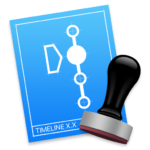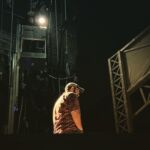Instagram Questions: Vol 2

A few months ago I did an “Instagram Questions” post, so I figured it was time to do another. In today’s post, I answer a handful of questions that were submitted to me via my Instagram @mikewoodld.
How do you do multiple shows in consecutive time frames? – @sebazmed7
Planning, organization, and a great team. I rarely am ever only working on one particular project at a time, which is a great thing but also a challenging thing. I wouldn’t be able to do it without the great team that I have assembled, and I certainly wouldn’t be able to do it without systems and procedures in place.
For example, art aside, I have just about the same process for every project that I work on. I do the same paperwork, the same prep work, etc. I work through it methodically. It long ago became a routine so that now I don’t have to reinvent the wheel every time I do a project.
The logistics of making it happen are a little more challenging. For example, in March of 2019 I have three theatrical projects and one opera project as well as teaching classes every Monday. The projects are in Atlanta, Tampa, Houston, and St. Petersburg, and the classes are in NYC. There is not a chance that I would be able to do this all by myself. I have a team of excellent assistants, associates, and programmers who help make things happen.
For example, if you look at the calendar on the left and scroll to March 2019, you’ll see that South Pacific and The Pearl Fishers overlap each other quite a lot. I’ll be in Atlanta still in dress rehearsals for South Pacific while The Pearl Fishers is focusing. I’ll have an associate who will be in Tampa focusing Pearl Fishers for me while I finish up in Atlanta. I’ll leave right after the final dress rehearsal in Atlanta on Thursday night, fly to Tampa, and start writing cues for the Pearl Fishers on Friday afternoon. Meanwhile, the associate on South Pacific will stick around in Atlanta that Friday just in case any last minute changes pop up. From there, I go home for a couple days and then it’s off to Houston for Anything Goes – meanwhile, Mamma Mia in the Park is prepping and loading in under the supervision of the production electrician and that associate designer.
Trusting people is key.
Do you like to be on headset during tech? – @quinnyfromthedonpowell
During cueing/programming time and the first tech rehearsals, absolutely. Once we get into runs of the show, no. I want to be able to get into the world of the show and concentrate on what’s happening.
Typically I start out using a headset and then once we get into runs, I’ll swap it out for my trusty HS-6 handset from ClearCom. Then I can pick up the phone and talk when I need to and quickly set it back down when I’m done.
What is one piece of advice that you’d give to a college freshman pursuing lighting? – @harrisonfreni
Back in 2014 I wrote a post about this exact subject for 4Wall – check it out here
https://www.usedlighting.com/lounge/5-things-student-lighting-designers-should-know
How do you get a tech theatre job? – @natalie.g.cook
Networking, networking, networking. Meeting people, becoming friends with people, working with people. That’s the real way to get in. If you want a full time job somewhere, sure, you can apply and interview and such, but I’d say that just about every freelance gig I’ve ever gotten was because I knew someone or had worked with someone prior to that show and they recommended me. You can be the most talented designer or technician in the world but if you don’t get out and meet people and work with people, you won’t get very far at all.
When you’re working on a show that has already been done, do you look at previous designs? – @natalie.g.cook
Not purposely – and honestly even if I did they wouldn’t be much help as chances are this particular production will be very different than the photo I’m looking at. The venue will be different, the scenery will be different, the direction will be different.
I guess I’m trying to say that I don’t usually set out to see what other people did, but I also don’t consciously prohibit myself from doing that. I just don’t really place a ton of value on it.
What do you do when you have a creative block? – @joelrlb
If I am working at my desk? Stare at the screen until something happens. No, I kid. I’ll do something else literally anything else. Like work on calendar stuff or make flight arrangements or go to the grocery store or a walk. Sometimes I’ll just play OpenRCT2.
I also find that having a deadline really helps me. I’ll do lots of random little things getting a drawing ready and just putzing around and then all of the sudden I’ll just start working and it’ll start flowing out.
Now, in tech, it’s a little harder. If I get in a groove, I typically can stay in that groove. If I get interrupted, it can be hard to get back into it. If I do hit a block, I’ll ask my team for help. I’ve been often known to say “I don’t know what to do here. Any ideas?” and “Make it different.” That’s where having that great team I talked about earlier comes into play.
Sometimes in tech you just have to stop, get up for a little while, and walk around. Go outside, think about things other than the problem for a few minutes, and then reattack it and see if the problem gets any better.
Do you have any tips for people that are just starting to use FileMaker? – @benphillipsLD
Watch the training videos on Lynda.com. Look at the starter solutions and see how they work. Start a bookmarks folder on your computer with links to things that you might find useful.
It’s a pretty steep learning curve if you’re coming in completely cold. You’ve gotta understand how a relationship based database works, understand filemaker coding languages, how to lay things out, etc. Start small and work from there.
I’m embarrassed to admit that for the first year of using FileMaker I didn’t really use any variables in any of my scripts. Once I discovered them I rewrote everything and it took 75% fewer lines and made things WAY simpler. I had 4 scripts to do something that could have been done with 1 using variables.
Anyway, yeah, as with anything, you’ve gotta experiment a bit to figure out how it works and then you’ve gotta be able to take the knowledge that you gained from experimentation and translate that into something usable for your use case. I highly recommend looking at the FileMaker forums too.
Channeling things! – @isaac.anderson_
This actually feeds into the earlier question about how to do multiple projects back to back. I typically use a channel numbering scheme that is more or less the same for every single project, so I’m not relearning channels every time I sit down in a new room.
I always do channeling from DSR. Channel 1 is always my DSR top or back cool instrument. I then restart my numbering for each purpose group. So for instance if I had 9 areas, my top cools would be 1 through 9 and my top warms would be 11 through 19. Templates in those areas might be 21 through 29, etc etc etc.
Typically I use the following when working in theatre:
1s Overhead stuff – top/back/diag/etc
100s Front Light, Box Booms
200s Booms, Ladders
300s Cyc, Drops
400s Specials
500s Moving Lights
600s (Not set, changes per show)
700s Followspots (if board controlled)
800s Practicals, LED Tapes
900s House Lights, Fog/Haze, Conductor, Stand Lights
1000s Hot Power/Non-Dim
Now sometimes I vary from that – for instance if I’m doing a small show with 30 lights I will keep them all close in number, but larger shows I typically stick to that numbering. There’s not really a reason, it’s just how I’ve always done it. You can do whatever works for you.
mikewoodld






